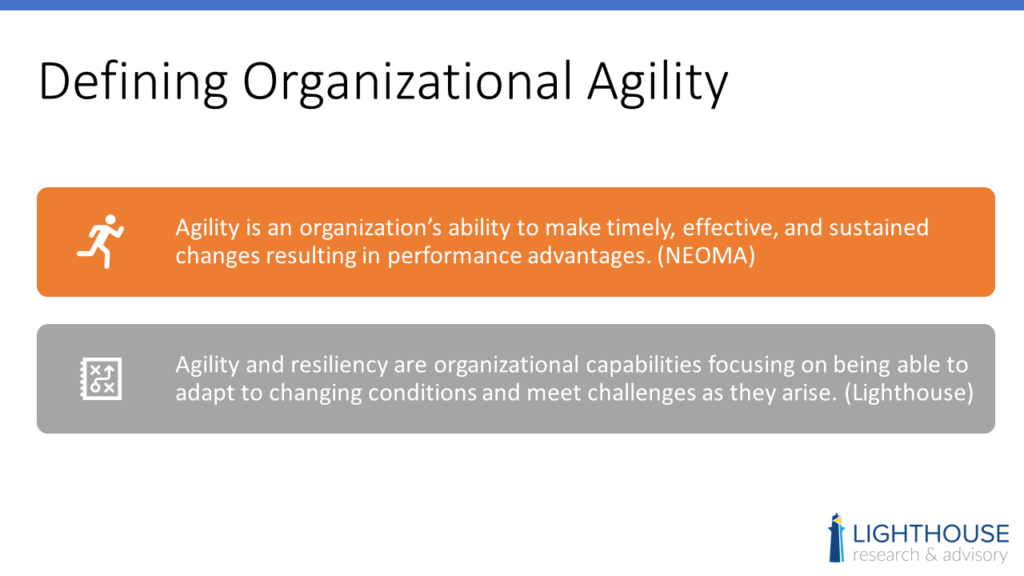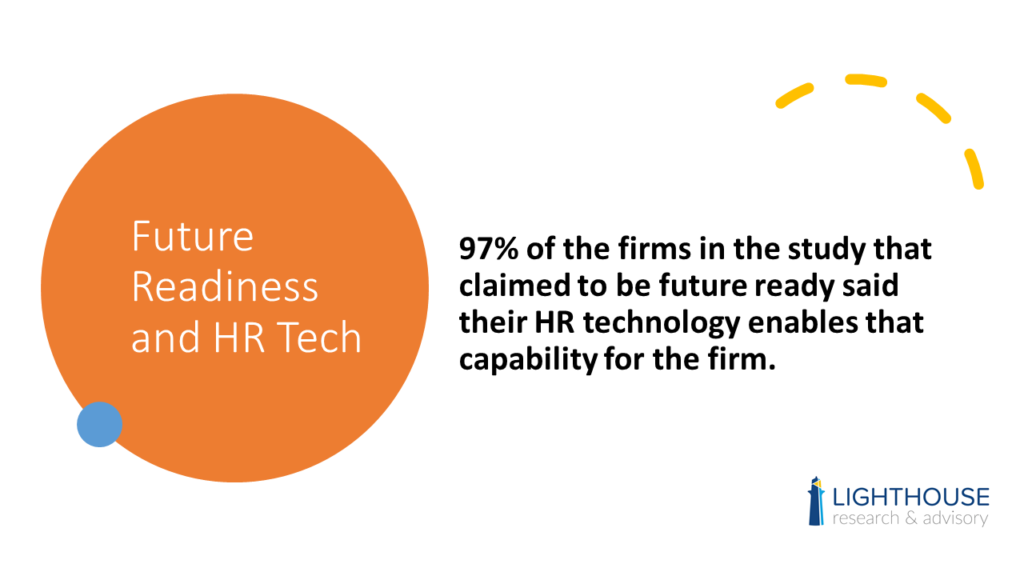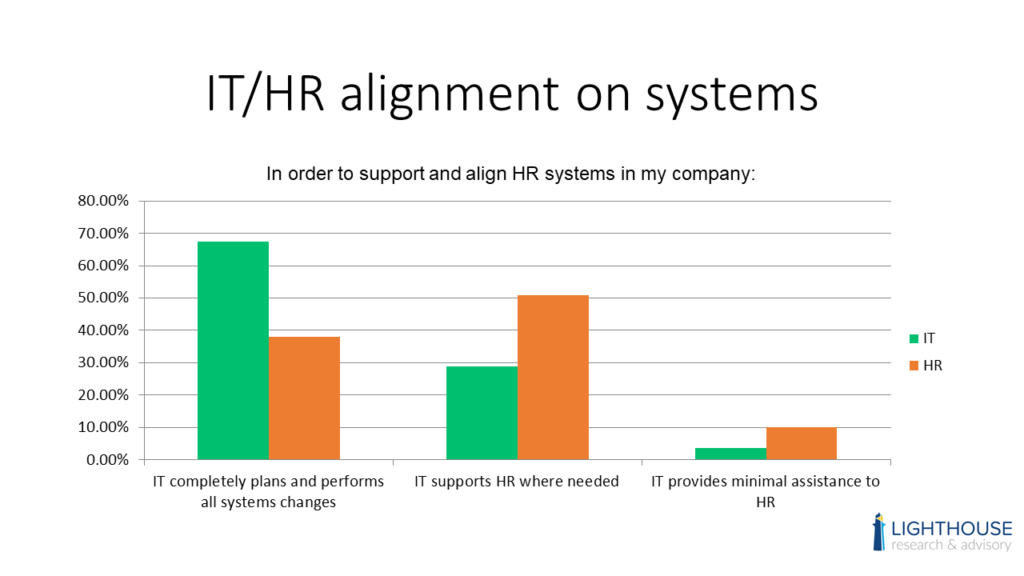Is There a Relationship Between HR Technology and Organizational Agility? [New Research]
In the last few months we’ve seen some incredible stories, both positive and negative, around the impact of HR technology on the business and people. We’ve also heard continuously about the importance of agility as a leadership competency for adapting to change. But what about organizational agility, an organization’s ability to adapt in response to changing conditions?
This summer we embarked on a research study to understand if there was an actual link between a firm’s use of HR technology and overall organizational agility. Note that this effort started after the COVID shutdown had already begun, so some of our recent post-COVID workplace research insights may also factor into this equation. We reached out to over 750 enterprise organizations to connect with HR and IT executives about their use of HR technology, their agility from an organizational standpoint, and the outcomes they saw from adopting HR systems.
First up, let’s offer a few definitions for organizational agility.

Knowing that definition, we wanted to understand the connection between technology and agility at an organizational level. The hypothesis was fairly simple: firms with the right kind of technology to manage their people will be more likely to be agile and resilient (or future-ready, as we also referred to it during the research). The results of the research clearly supported that hypothesis: 97% of the firms that claimed to be future ready said their HR technology is a critical enabler of that.

Key Findings in the Organizational Agility and HR Technology Study
Below are some of the core findings in this study. It was a tremendous effort, and the team and I walked away with this thought:
Organizations need HR technology that is flexible and agile as the humans running the HR function.
Finding #1: IT and HR are not on the same page when it comes to HR technology projects.
IT says, “We want to be a partner in this and bring our expertise to the table.” HR says, “We’ll call you if we need you.”

This is a clear opportunity to build stronger relationships and alignment on these critical projects.
Finding #2: The number of HR applications in use changes the outcomes they see and dramatically increases complexity.
- Those with 10+ HR applications in place are 2x more likely to say their HR tech limit efforts to be agile and resilient.
- Those firms with a system tenure of 5+ years are 62% more likely to have 10 or more applications just to run their HR operations.
- As the number of HR applications in use increases, data accuracy decreases steadily. Having data in multiple systems means it’s harder to get a sense of the “real” truth and make complex decisions, especially in enterprise firms.
Finding #3: Certain capabilities of HR systems and software can enable or prevent organizational agility.
- The top two factors preventing organizational agility? A lack of essential features and a system that isn’t unified (back to the data accuracy problem again). These and other factors hold organizations back from being as agile as they need to be.
- The top two factors enabling organizational agility? Good user experience that drives system adoption and enablement of workforce productivity. These capabilities enhance agility and enable firms to be more responsive to change.
To see the rest of our findings and hear some of the case studies and examples from practitioners we interviewed, click here to download the report.

Ben Eubanks is the Chief Research Officer at Lighthouse Research & Advisory. He is an author, speaker, and researcher with a passion for telling stories and making complex topics easy to understand.
His latest book Talent Scarcity answers the question every business leader has asked in recent years: “Where are all the people, and how do we get them back to work?” It shares practical and strategic recruiting and retention ideas and case studies for every employer.
His first book, Artificial Intelligence for HR, is the world’s most-cited resource on AI applications for hiring, development, and employee experience.
Ben has more than 10 years of experience both as an HR/recruiting executive as well as a researcher on workplace topics. His work is practical, relevant, and valued by practitioners from F100 firms to SMB organizations across the globe.
He has spoken to tens of thousands of HR professionals across the globe and enjoys sharing about technology, talent practices, and more. His speaking credits include the SHRM Annual Conference, Seminarium International, PeopleMatters Dubai and India, and over 100 other notable events.

[…] Related: check out our brand new research findings that explore whether or not HR technology plays a part in … […]